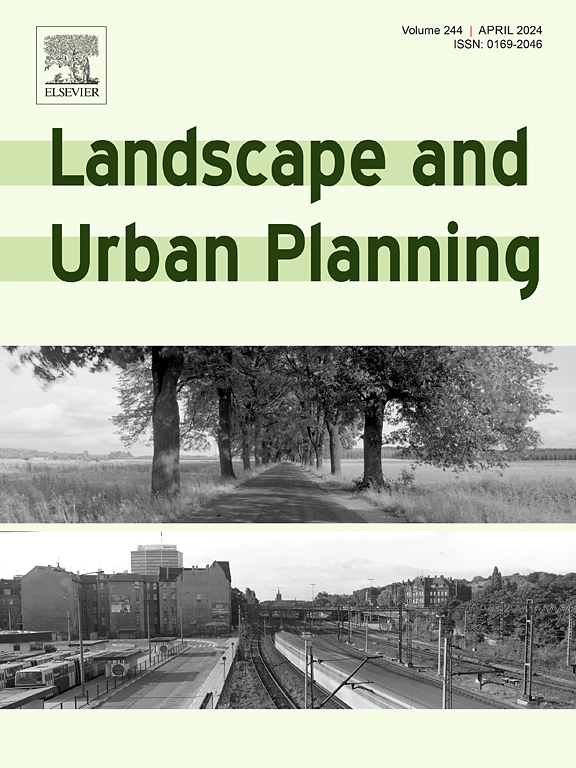如何处理中间的空间?非正式绿地的社会生态价值与规划非规划的挑战
IF 9.2
1区 环境科学与生态学
Q1 ECOLOGY
引用次数: 0
摘要
围绕IGS的不断发展的讨论——我们城市中未规划和无意的绿色空间——已经发展到一个地步,我们对它们多样化的社会生态价值有了越来越强的理解。随着我们对IGS的理解不断加深,我们有能力和责任更批判性地思考如何在土地使用决策中更积极地考虑这些空间,以改善社会和环境正义的结果。本文探讨了这一概念,概述了三种策略,以帮助规划者和管理者做出更明智的决策。这三种策略包括战略性不干涉方法、形式化方法和临时使用方法。没有一种方法适用于所有情况,本文讨论了每种方法的优缺点。这种不干涉的策略允许IGS以最小的干预自然发展,使其适合具有现有生态或社会价值的地点。形式化的方法将IGS转变为更正式的绿色空间,如公园,利用IGS场地的潜力,同时可能在此过程中破坏任何现有的价值。临时使用方法在这两种方法之间取得了平衡,允许和支持一些小规模的安装,同时确保保留最有价值的现有场地特征。最后,提出了几个关键的突出问题,以指导未来在IGS和绿地规划领域的研究。本文通过讨论每种方法的优势和局限性来指导决策者,并提出未来的研究方向,以加强城市环境中IGS的规划和管理。本文章由计算机程序翻译,如有差异,请以英文原文为准。
What to do with the spaces in between? The social-ecological value of informal green space and the challenge of planning the unplanned
The evolving discourse around IGS – the unplanned and unintended green spaces in our cities – has developed to a point where we have a strong and growing understanding of their diverse social-ecological value. With our growing understanding of IGS comes the capacity and responsibility to think more critically about how these spaces should be more actively considered in land use decision making to improve social and environmental justice outcomes. The paper explores this concept, outlining three strategies to assist planners and managers make more informed decisions regarding IGS. The three strategies include the strategic hands-off approach, formalisation approach, and temporary use approach. No single approach is suitable in all circumstances, and the paper discusses the strengths and weakness of each. The strategic hands-off approach allows IGS to develop naturally with minimal intervention, making it suitable for sites with existing ecological or social value. The formalisation approach converts IGS into more formal green spaces – such as parks – capitalising on the potential of an IGS site, while possibly destroying any existing value in the process. The temporary use approach strikes a balance between these two methods, allowing and supporting some smaller scale installations while ensuring the most valuable existing site features are retained. Finally, I outline several key outstanding questions to guide future research in the field of IGS and green space planning. This paper guides decision-makers by discussing the advantages and limitations of each approach and suggests future research directions to enhance IGS planning and management in the urban environment.
求助全文
通过发布文献求助,成功后即可免费获取论文全文。
去求助
来源期刊

Landscape and Urban Planning
环境科学-生态学
CiteScore
15.20
自引率
6.60%
发文量
232
审稿时长
6 months
期刊介绍:
Landscape and Urban Planning is an international journal that aims to enhance our understanding of landscapes and promote sustainable solutions for landscape change. The journal focuses on landscapes as complex social-ecological systems that encompass various spatial and temporal dimensions. These landscapes possess aesthetic, natural, and cultural qualities that are valued by individuals in different ways, leading to actions that alter the landscape. With increasing urbanization and the need for ecological and cultural sensitivity at various scales, a multidisciplinary approach is necessary to comprehend and align social and ecological values for landscape sustainability. The journal believes that combining landscape science with planning and design can yield positive outcomes for both people and nature.
 求助内容:
求助内容: 应助结果提醒方式:
应助结果提醒方式:


